How Far Away Can A Drone Fly is a common question among drone enthusiasts and professionals alike. The answer involves understanding both the drone’s capabilities and the legal restrictions in place to ensure safe operation. At flyermedia.net, we break down the factors that affect drone range and provide practical tips for maximizing flight distance within legal boundaries, offering solutions for safe and compliant drone operations. Explore airspace regulations, and battery optimization techniques, and discover essential guidelines for responsible drone piloting.
1. Factors That Impact Drone Flight Distance
Multiple elements affect the maximum distance a drone can travel from its remote control. These factors encompass technological capabilities, environmental conditions, and regulatory limitations, each playing a crucial role in determining the operational range of the drone.
1.1. Battery Life and Capacity
Battery life is a primary constraint on how far a drone can fly. Obviously, a drone can only fly as long as its battery lasts.
- Higher Capacity Batteries: Drones equipped with high-capacity batteries, measured in milliampere-hours (mAh), generally offer longer flight times. For example, a drone with a 6000 mAh battery will likely fly longer than one with a 3000 mAh battery, assuming similar weight and power consumption.
- Battery Technology: Lithium Polymer (LiPo) batteries are commonly used in drones because of their high energy density and lightweight properties. Advances in battery technology continue to push the boundaries of flight time, as noted in research from Embry-Riddle Aeronautical University, which highlights ongoing efforts to develop batteries that are lighter and more energy-efficient.
- Optimal Usage: Draining the battery completely can reduce its lifespan. To avoid this, it’s best to land the drone when the battery reaches approximately 20-30%.
1.2. Signal Range and Transmission Technology
Signal range dictates the reliability of the connection between the drone and its controller.
- Transmission Systems: Modern drones use various transmission technologies like Wi-Fi, RC (radio control), and digital transmission systems (e.g., DJI’s OcuSync). RC systems offer greater stability and range, sometimes reaching several miles under ideal conditions.
- Interference: Buildings, trees, and electronic devices can disrupt signals. Flying in open areas reduces interference, enabling drones to reach their maximum specified range.
- Signal Boosters: Additional signal boosters can amplify the transmission signal, which allows for increased flight distance and reduces the risk of signal loss.
**1.3. Weight and Aerodynamics
The physical attributes of a drone, such as its weight and aerodynamic design, directly influence its efficiency and range. These factors affect how much power the drone needs to stay airborne and maneuver effectively.
- Weight: A heavier drone requires more power to maintain flight, which can rapidly deplete the battery.
- Payload: The additional weight of cameras, sensors, or other payloads can shorten flight times.
- Aerodynamic Design: Streamlined designs reduce air resistance, allowing drones to fly more efficiently and cover greater distances. In contrast, drones with bulky frames or poorly designed aerodynamics require more energy to overcome drag, reducing their effective range.
1.4. Environmental Conditions
External factors such as wind, temperature, and altitude can dramatically impact a drone’s flight performance. These conditions can affect battery life, signal stability, and overall flight dynamics.
- Wind Speed: Strong winds require the drone to expend more energy to maintain its course, which drains the battery more quickly.
- Temperature: Cold weather reduces battery efficiency, leading to shorter flights. Excessive heat can cause components to overheat, potentially limiting a drone’s range or causing system failures.
- Altitude: High altitudes reduce air density, affecting the drone’s lift and propulsion capabilities. This can require more power to maintain flight, thus reducing the maximum flight distance.
1.5. Drone Type and Purpose
The category of drone and its intended use significantly influence its design, technology, and ultimately, its flight range. Drones are typically categorized into consumer, prosumer, and commercial types, each tailored for specific applications with varying capabilities.
- Consumer Drones: These prioritize portability and ease of use, typically offering shorter ranges of 1 to 5 miles, making them ideal for recreational flying and casual photography.
- Prosumer Drones: Designed for enthusiasts and semi-professionals, these drones offer enhanced performance and camera systems, with ranges typically between 3 to 10 miles, suitable for professional photography and real estate applications.
- Commercial Drones: Built for specialized applications, commercial drones require exceptional reliability and performance, often flying beyond 10 miles, equipped with advanced navigation and high-capacity batteries for tasks like infrastructure inspection and surveying.
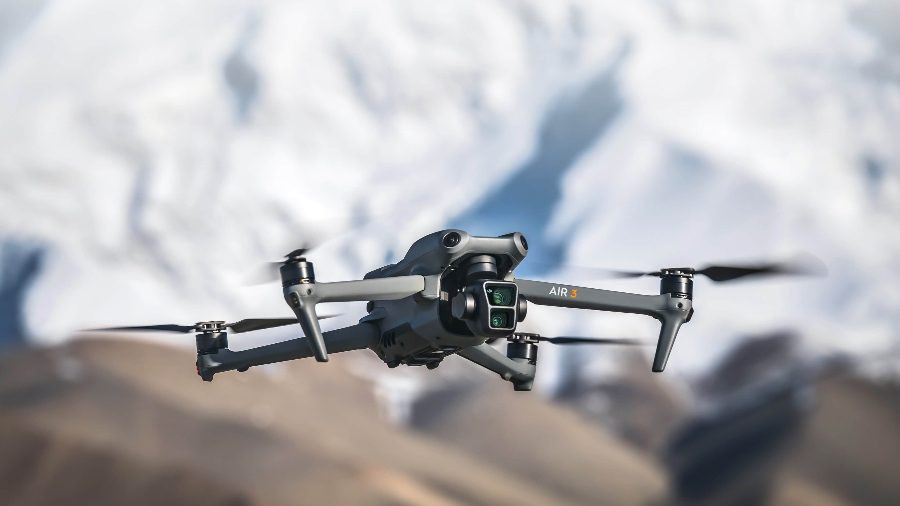 dji-air-3
dji-air-3
DJI Air 3 offering an extended flight range due to advanced battery technology.
2. Drone Flight Range by Category
The flight range of a drone is significantly influenced by its category, reflecting the drone’s design and intended applications. Consumer, prosumer, and commercial drones vary in their flight range capabilities, as they are tailored to meet different operational needs.
2.1. Consumer Drones: Recreational Use
Consumer drones are designed for ease of use and recreational flying. These drones are generally more affordable and accessible, making them a popular choice for hobbyists and casual users.
- Typical Range: Consumer drones typically have a flight range of 1 to 5 miles (1.6 to 8 km). This range is suitable for capturing photos and videos in local areas.
- Ideal For: Recreational flying, family outings, and capturing vacation memories.
- Popular Models: DJI Mini 3 Pro, Autel EVO Lite+.
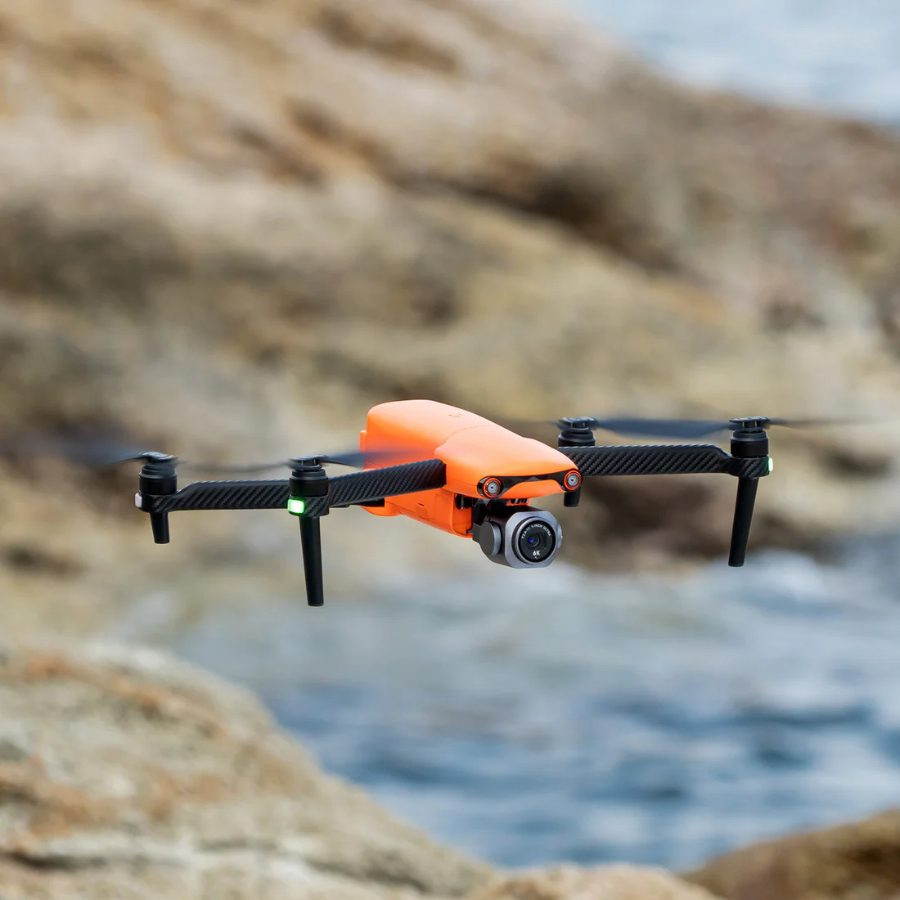 evo-lite-plus
evo-lite-plus
Autel EVO Lite+ drone, which is popular for its ease of use and moderate flight range.
2.2. Prosumer Drones: Advanced Photography and Videography
Prosumer drones bridge the gap between consumer and commercial drones, offering enhanced features and capabilities for more demanding users. These drones are often used by enthusiasts and semi-professionals who require higher performance and better camera systems.
- Typical Range: Prosumer drones can typically cover distances of 3 to 10 miles (4.8 to 16 km) due to more robust transmission systems and higher capacity batteries.
- Ideal For: Professional photography, videography, real estate inspections, and survey mapping.
- Popular Models: DJI Mavic 3 Pro, Autel EVO Pro 2 V3.
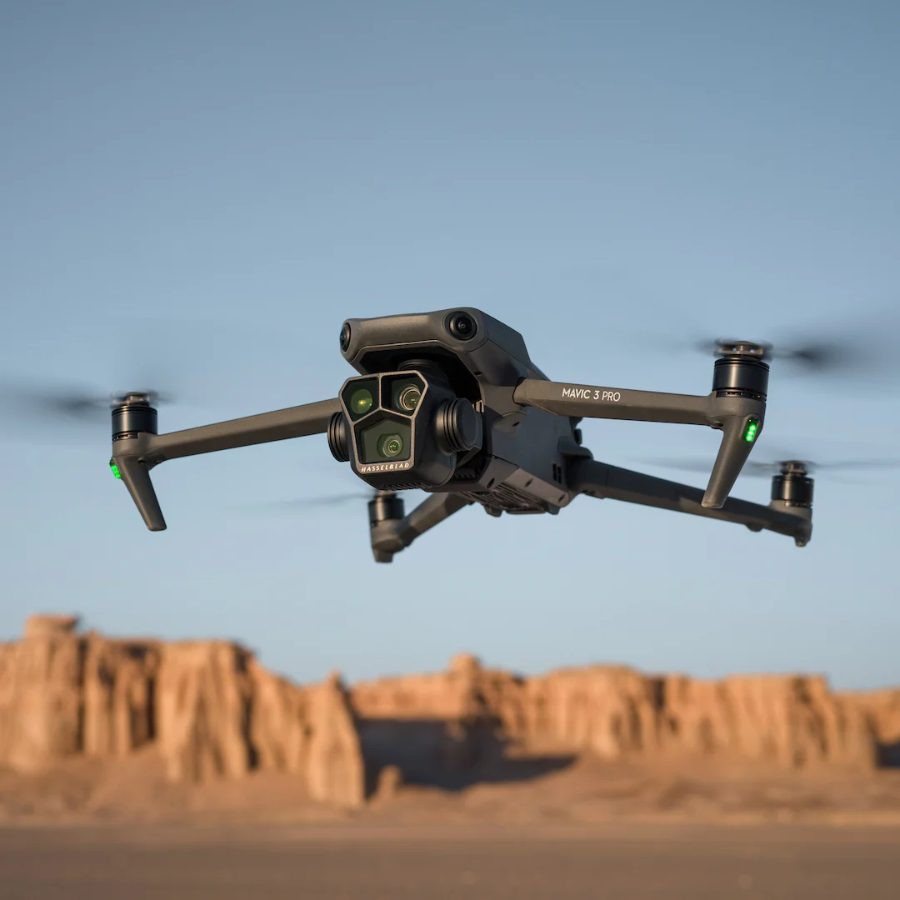 mavic-3-pro-flight-range
mavic-3-pro-flight-range
DJI Mavic 3 Pro drone, known for its high-quality camera and extended flight range for professional use.
2.3. Commercial Drones: Specialized Applications
Commercial drones are designed for specialized applications that require exceptional reliability, extended range, and high performance. These drones are equipped with advanced navigation systems, high-capacity batteries, and robust transmission technologies.
- Typical Range: Commercial drones can typically fly beyond 10 miles (16+ km).
- Ideal For: Infrastructure inspection, search and rescue operations, surveying, and agricultural monitoring.
- Popular Models: DJI Matrice 350 RTK, Parrot Anafi USA.
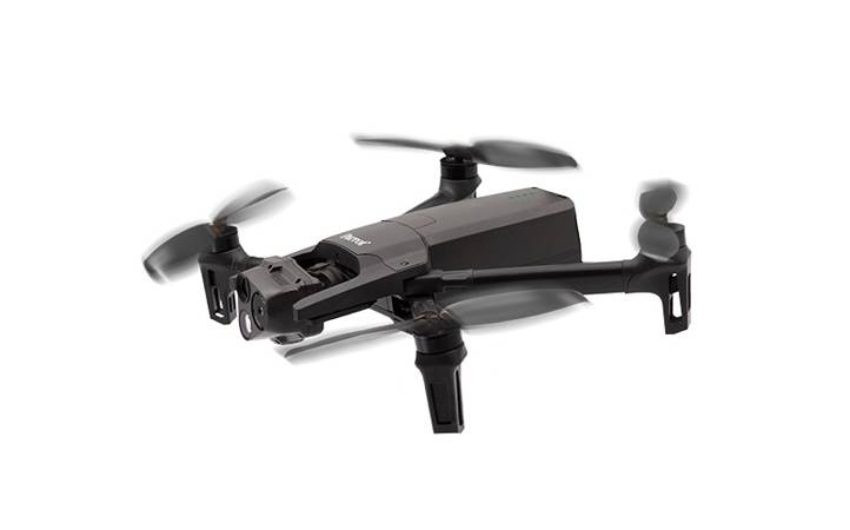 anafi-usa-flight-range
anafi-usa-flight-range
Parrot ANAFI USA drone, designed for commercial applications requiring extended range and specialized payloads.
2.4. Category Table
| Category | Typical Flight Range | Popular Models | Use Cases |
|---|---|---|---|
| Consumer Drones | 1 – 5 miles (1.6 – 8 km) | DJI Mini 3 Pro, Autel EVO Lite+ | Recreational flying, casual photography, travel |
| Prosumer Drones | 3 – 10 miles (4.8 – 16 km) | DJI Mavic 3 Pro, Autel EVO Pro 2 V3 | Professional photography, real estate, mapping |
| Commercial Drones | 10+ miles (16+ km) | DJI Matrice 350 RTK, Parrot Anafi USA | Infrastructure inspection, search and rescue, surveying |
Note: Actual flight ranges may vary depending on environmental conditions, signal interference, and battery performance. Always consult the manufacturer’s specifications and regulations before planning your flight.
3. Methods to Extend Drone Flight Range
Despite the inherent limits of each drone model, several effective strategies can extend the flight range. These methods involve careful management of battery resources, optimizing signal transmission, and employing advanced flight techniques.
**3.1. Battery Upgrades and Management
Optimizing battery performance and considering upgrades are crucial for extending a drone’s flight range.
- Higher Capacity Batteries: Upgrading to batteries with higher milliampere-hour (mAh) ratings can significantly increase flight time.
- Compatibility: Ensure any battery upgrade is fully compatible with your drone model to avoid potential safety issues or operational problems.
- Avoid Deep Discharges: Regularly draining the battery below 20% can reduce its lifespan and efficiency. Aim to land when the battery is around 30%.
- Proper Storage: Store batteries in a cool, dry place, ideally at a 50% charge level if they won’t be used for an extended period to prevent degradation.
- Pre-Flight Warm-Up: Warm the battery to around 77°F (25°C) before takeoff, especially in cold conditions, to ensure optimal performance. This can be achieved by running the drone for a few minutes on the ground or using a battery warmer.
3.2. Signal Boosters and Antenna Modifications
Enhancing signal strength is critical for maintaining a stable connection and maximizing flight range. Signal loss can trigger the return-to-home protocol, limiting the drone’s achievable distance.
- Signal Boosters: Attachable signal boosters amplify the transmission signal, reducing the chance of signal loss. These are lightweight and easy to install.
- Antenna Modifications: Upgrading the drone or controller’s antenna can improve signal quality. Directional antennas focus the signal strength in a specific direction, ideal for long-distance flights. Omnidirectional antennas provide better coverage in all directions but with a shorter range.
- Avoid Interference: Stay away from areas with high electromagnetic interference, such as urban environments with lots of Wi-Fi networks or power lines. This helps maintain a stronger and more stable connection.
3.3. Flight Techniques
How you fly your drone can also have an impact on its battery life, and thereby on its range.
- Smooth Flight: Avoid abrupt movements, rapid acceleration, and sudden stops, which can drain the battery quickly.
- Fly Higher: Flying at higher altitudes can reduce signal interference from obstacles like trees or buildings, but stay within legal altitude limits and maintain visual line-of-sight.
- Monitor Wind: Plan your flight path to take advantage of tailwinds when flying long distances and avoid headwinds as much as possible.
- Optimize Payload: Remove unnecessary attachments to reduce extra weight.
By implementing these strategies, you can significantly extend your drone’s effective range, enabling longer and more ambitious flights.
4. Legal and Safety Considerations for Drone Flights
Even if your drone is capable of flying long distances, it is essential to be aware of the legal and safety guidelines that govern drone operations.
4.1. Visual Line of Sight (VLOS)
The FAA requires drone operators to maintain Visual Line of Sight (VLOS) at all times during flight. This means the operator must be able to see the drone without any aids like binoculars.
- Prevent Collisions: VLOS is a critical measure to prevent collisions and ensure control over the aircraft.
- FAA Regulations: The FAA is considering new rules that may allow for Beyond Visual Line of Sight (BVLOS) flights, but these require extensive documentation and approval.
- FPV Limitations: FPV (First Person View) flying, even with a spotter, does not meet VLOS requirements, as the pilot must be able to see the drone with their naked eye.
4.2. Altitude Restrictions
Both recreational and commercial drone pilots must adhere to altitude restrictions to ensure airspace safety and prevent interference with manned aircraft.
- Maximum Altitude: The maximum altitude is capped at 400 feet above ground level (AGL) for most drone pilots.
- FAA Exemptions: Exemptions can be obtained for specific commercial operations, but these require extensive documentation and approval from the FAA.
- Safety: Staying below the maximum altitude helps reduce the risk of interfering with manned aircraft and ensures better visual contact.
**4.3. Safety Guidelines for Long-Range Flights
When flying beyond your drone’s typical range, it’s important to prioritize safety to mitigate potential risks. Following safety precautions can help ensure smooth flight operations.
- Return-to-Home (RTH) Plan: Ensure the Return-to-Home (RTH) feature is activated and correctly set before takeoff.
- Battery Monitoring: Monitor battery levels closely throughout the flight and plan your flight path to allow ample time to return home.
- Use a Spotter: If using FPV or flying at distances where maintaining direct line of sight is challenging, use a spotter to maintain visual contact with the drone.
- Beware of Interference: Fly in open areas whenever possible and be mindful of potential interference, especially near urban environments or metal structures.
- Avoid Flying Over People and Property: Plan your flight path to avoid flying over people, vehicles, and structures.
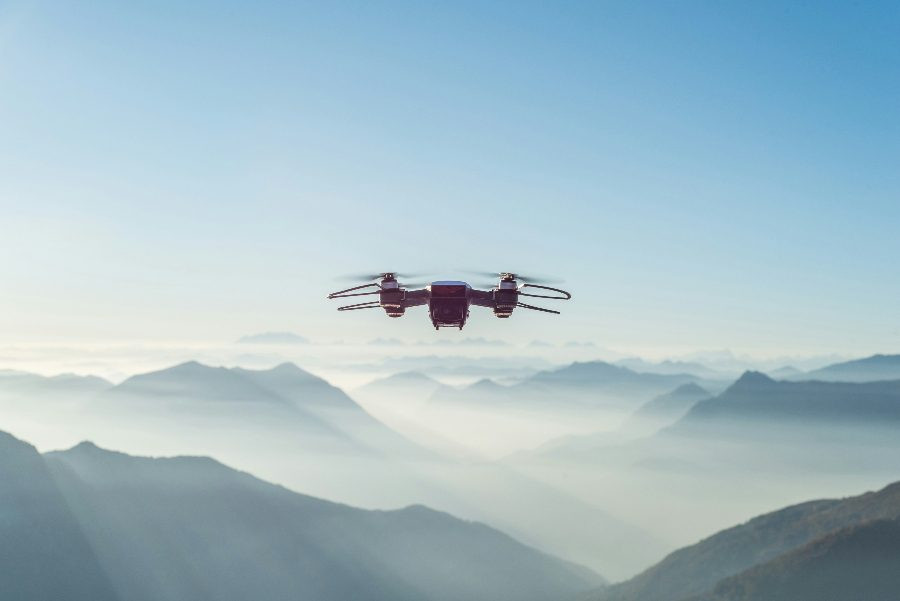 how-far-can-you-fly-a-drone
how-far-can-you-fly-a-drone
Drone flying in an open area, ensuring safety and compliance with regulations.
5. Frequently Asked Questions (FAQ) on Drone Flight Distance
Below are answers to some common questions about drone flight distances, covering regulations, technology, and safety tips.
5.1. How far can you fly a drone?
The distance you can fly a drone depends on its type, battery life, and transmission technology. Consumer drones typically have a range of 1 to 5 miles (1.6 to 8 kilometers), while prosumer models can reach up to 10 miles (16 kilometers). Commercial drones, designed for specialized tasks, can often fly beyond 10 miles (16+ kilometers) under optimal conditions. However, most countries, including the U.S., require that drones remain within the operator’s visual line of sight (VLOS), which usually limits practical range to about 1 to 2 miles (1.6 to 3.2 kilometers) at the most.
5.2. What’s the longest distance a drone can fly?
The longest distance a drone can fly is typically achieved by specialized commercial drones with extended battery life and advanced transmission systems. Some models, such as the senseFly eBee X or the WingtraOne GEN II, can cover over 60 miles (97 kilometers) in a single flight with optimized settings and favorable conditions. These are usually fixed-wing drones used for long-range mapping and surveying missions.
5.3. What happens when a drone goes out of range?
If a drone goes out of range, it typically initiates a “Return-to-Home” (RTH) function, which guides it back to its takeoff point using GPS. If the drone loses both signal and GPS, it may hover in place, land, or follow a pre-set flight path, depending on its programming. It’s important to be aware of your drone’s RTH settings to prevent it from getting lost or crashing in unfamiliar territory.
5.4. How long can drones stay flying?
The flight time of a drone depends on its battery capacity, weight, and environmental conditions. Consumer drones usually have a flight time of 20 to 30 minutes, while prosumer models can stay airborne for up to 40 minutes. Advanced commercial drones, such as the DJI Matrice 350 RTK, can fly for up to 55 minutes on a single charge. Some experimental models using hybrid or solar power can remain airborne for several hours or even days under ideal conditions.
5.5. Can you fly a drone out of sight (BVLOS)?
Flying a drone out of sight is known as Beyond Visual Line of Sight (BVLOS) operation. While technically possible, it is regulated and typically requires special permissions or waivers from aviation authorities like the FAA in the United States. BVLOS operations are primarily conducted for commercial purposes, such as long-distance surveying, search and rescue, and infrastructure inspection.
5.6. How high can a drone fly?
Most consumer drones are limited to a maximum altitude of 400 feet (122 meters) above ground level by aviation regulations. This rule helps prevent interference with manned aircraft. Some commercial drones can fly higher, but this usually requires special permissions. In unrestricted airspace, drones have been tested to fly up to 10,000 feet (3,048 meters), but such operations are not typical or legal without appropriate clearance.
5.7. Can drones fly in strong winds?
While some drones are designed to handle moderate wind speeds, flying in strong winds can be challenging and potentially dangerous. Consumer drones can generally handle wind speeds of up to 15-20 mph (24-32 kph), while prosumer and commercial models can manage winds of up to 25-30 mph (40-48 kph). It’s important to monitor wind conditions and avoid flying in turbulent weather to maintain control and prevent crashes.
5.8. Can you extend a drone’s flight range?
Yes, you can extend a drone’s flight range by upgrading its battery to a higher capacity model, using signal boosters, and optimizing flight patterns. However, these modifications should be done cautiously and within the manufacturer’s specifications to avoid damaging the drone or voiding its warranty. It’s also important to consider legal restrictions on flight range and altitude in your area.
5.9. Can drones be used in bad weather?
Most consumer and prosumer drones are not designed to operate in adverse weather conditions such as rain, snow, or fog. Water and moisture can damage the drone’s electronic components, and visibility issues can disrupt navigation and signal transmission. Some commercial drones, like the DJI Matrice series, have weather-resistant features and can handle light rain and moderate winds, but it’s always best to check the drone’s specifications before flying in uncertain conditions.
5.10. How do I know if my drone is within range?
Most modern drones provide real-time telemetry data, including distance from the pilot, through the controller or a connected app. You can monitor this information on your screen to ensure your drone remains within safe operating limits. Additionally, some drones have built-in warnings and automated Return-to-Home (RTH) functions that activate when the drone approaches its maximum range.
5.11. What should I do if I lose sight of my drone?
If you lose sight of your drone, remain calm and check your controller’s screen for real-time video feed and telemetry data. Use the Return-to-Home (RTH) function if your drone has it, and monitor its location and altitude on the map. Avoid pressing random controls, as this could worsen the situation. If your drone does not return or you cannot regain control, check the last known coordinates on your app to search for it safely.
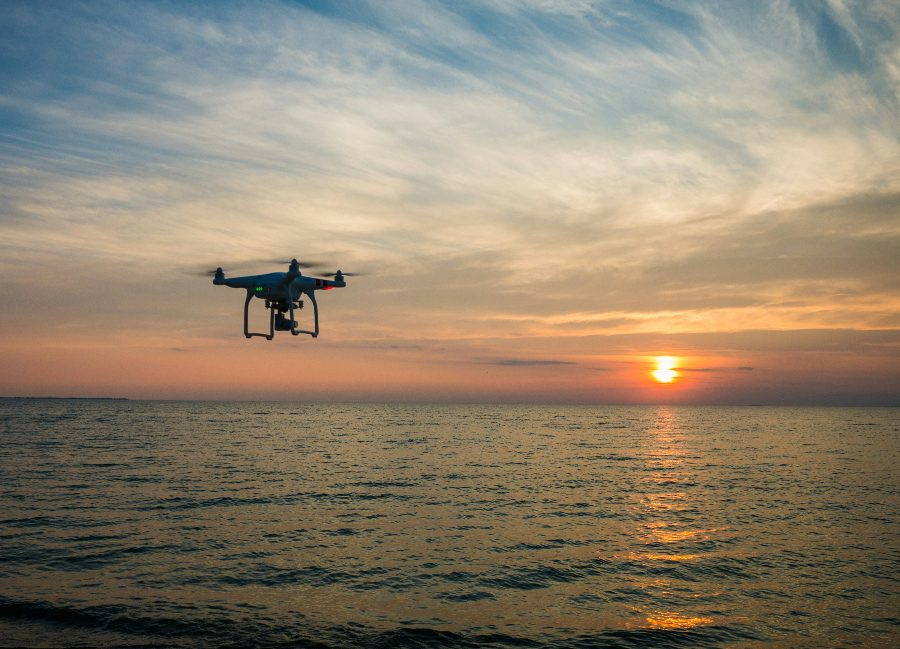 how-far-fly-drone
how-far-fly-drone
Drone pilot checking telemetry data on the controller screen to ensure the drone is within safe operating limits.
Conclusion
Understanding how far away can a drone fly involves considering a mix of technical capabilities, legal restrictions, and safety practices. While drones are becoming increasingly advanced, with longer flight ranges and sophisticated features, it’s crucial to operate them responsibly and within the bounds of the law.
Whether you’re a hobbyist, a semi-professional, or a commercial operator, staying informed about the latest regulations and best practices ensures safe and enjoyable drone flying. For more detailed information on drone technology, regulatory updates, and training programs, visit flyermedia.net. Explore our comprehensive resources to enhance your knowledge and skills in the dynamic world of drone aviation.
Ready to take your drone piloting skills to new heights? Visit flyermedia.net today and discover a world of information on drone training, aviation news, and career opportunities. Whether you’re looking to learn to fly or aiming to advance your aviation career, flyermedia.net has the resources and expertise to help you succeed.